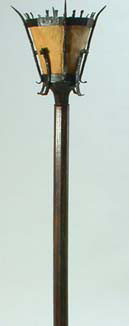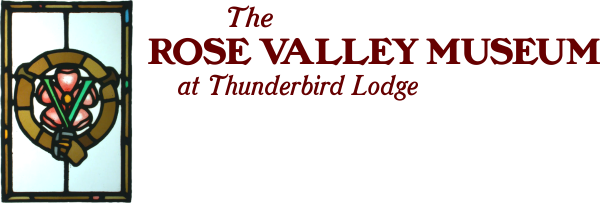Herbert Walton

Herbert Lightfoot Walton (1885-1938) was a versatile artist. He painted in oil, was a stonemason, sculpted, and was an iron craftsman and a builder.
His mother was Mary Rhodes Norton and his father was Charles Joseph Walton. They were direct descendents of Thomas Walton, a Quaker, who at the age of twenty five with his three brothers came from England and settled in Byberry Pennsylvania, fifty miles or so up the Delaware from Philadelphia. The Waltons were related to both the Kite and Price families through marriage.
Mary “Mother” Walton had six boys one of whom, Dwight, drowned in a swimming accident when they lived in Philadelphia. When their father died in 1893 at the age of 42, the Walton family moved to Washington, Iowa to live with Mary Walton’s sister and her husband. Herbert left Iowa in 1903 to join his older brother William McKee Walton in Rose Valley and attend the Pennsylvania Museum School of Industrial Arts. Charles, his son, said “When I went to that same school 35 years later, two of the teachers remembered my father with fondness.”
In Rose Valley, Herbert lived with Aunty Bess Warrington in a bungalow that was the second house from the corner of Price’s Lane and Rose Valley Road until he was married in 1914. After he was married, Hub (or Herb) built a house right next door to brother Will on Price’s Lane. The two went to Europe and the West Indies together and were the best of friends.
Herbert also participated in Hedgerow theater and in the Rose Valley Chorus. He played Androcles against Jasper Deeter’s lion. And then they would switch roles. He also was Mr. Pim in Mr. Pim Passes By.
Herbert Walton built houses for a variety of architects, and sometimes used his own plans. He had an artistic touch that led him to select all his own materials – wood, stone, roof slates or tiles. He was chosen by William Price to build the five houses on the hill in Rose Valley that were designed by Price and commissioned by Charles T. Schoen (Porter Lane.) In his forge on Price’s Lane, he forged beautiful fireplace tools and screens, lamps, tables, and decorative articles. His best known works, still seen today, are the Rose Valley street signs and the lamps at Hedgerow Theatre.
Charles (his son) remembers, “My father built a workshop/studio next to his house. He had a forge in the studio and on Sunday mornings you could hear him banging away on a piece of iron to make a fire place tool or an iron dragon. He painted in the upper room of his studio. During the depression gold was confiscated by the government. In protest he bought some gold leaf and covered his picture frames with patches of gold. He died in 1938 in Rose Valley at the age of 54 from a heart condition.”
Source: The Hedgerow Theatre: An Historical Study, J.C.Wentz, 1970
History of Rose Valley, vol.1
Comments from Charles Walton (son of Herbert Walton) in 2003

